Planning a trip to the breathtaking landscapes of Ha Giang, Vietnam? Wondering what’s the optimal time to experience its beauty? At SIXT.VN, we understand the importance of timing your adventure just right to maximize your enjoyment of this stunning region. Finding the perfect moment ensures you witness Ha Giang at its most spectacular. Discover when to explore for unforgettable memories.
Ha Giang, a jewel of Northern Vietnam, beckons with its dramatic mountain passes, vibrant ethnic cultures, and stunning natural beauty. Determining the best time to visit Ha Giang involves considering your priorities, whether it’s pleasant weather, fewer crowds, or specific seasonal attractions. The Ha Giang Loop offers different experiences throughout the year, each with unique advantages.
1. Understanding Ha Giang’s Seasons
Before diving into the best times to visit, let’s break down Ha Giang’s climate into distinct seasons, each offering a unique flavor to your travel experience.
- Spring (January – March): Characterized by milder temperatures, blossoming flowers, and festive atmospheres.
- Summer (April – May): Warm days, clear skies at the start, transitioning to rice planting season with its reflective beauty.
- Rainy Season (June – August): Higher temperatures and increased rainfall, creating lush landscapes and vibrant rainbows.
- Autumn (September – October): Pleasant temperatures, golden rice paddies, and blooming buckwheat flowers.
- Winter (November – December): Cool and dry conditions, with the possibility of experiencing fog-covered valleys and clear skies.
2. Best Time for Pleasant Weather: September to November
When is the best time to visit Ha Giang for pleasant weather?
The months of September to November offer the most agreeable weather in Ha Giang. The rainy season has subsided, leaving behind clear skies and comfortable temperatures, typically ranging from the mid-60s to the mid-70s Fahrenheit (around 18-24°C). This period is ideal for outdoor activities like trekking and motorcycling, allowing you to fully appreciate the stunning scenery without the discomfort of excessive heat or rain. According to Vietnam National Administration of Tourism, this period sees a surge in tourist arrivals due to the favorable climatic conditions.
During September and October, the rice terraces transform into a sea of gold, offering a visual spectacle that draws photographers and nature enthusiasts from around the globe. November then brings the bloom of buckwheat flowers, painting the landscape in shades of pink and purple. The pleasant weather enhances these natural attractions, making your visit even more memorable.
3. Best Time for Flower Lovers: January to March and October to November
When is the best time to visit Ha Giang for viewing stunning blooms?
January to March and October to November are the prime times for witnessing Ha Giang’s floral displays. In spring, the region comes alive with the delicate blossoms of peach, plum, and apricot trees. Autumn brings the stunning buckwheat flowers. These seasonal blooms create a picturesque backdrop for your Ha Giang adventure.
The flowers not only enhance the beauty of the landscape but also play a vital role in the local culture and economy. Buckwheat flowers, in particular, are used to make a local wine and are featured in many traditional dishes. Visiting during these flowering seasons provides an opportunity to immerse yourself in the local culture and traditions.
4. Best Time for Golden Rice Terraces: September
When is the best time to witness Ha Giang’s golden rice terraces?
September is the golden window to witness the breathtaking rice terraces of Ha Giang in their full glory. As harvest season approaches, the rice paddies transform into a sea of gold, creating a stunning visual spectacle. This is a photographer’s dream and a cultural experience that should not be missed. The views are especially stunning in Hoang Su Phi.
Experiencing the rice terraces in September also provides insight into the local agricultural practices and way of life. You can witness farmers harvesting the rice, a tradition that has been passed down through generations. It’s a chance to connect with the local community and learn about their customs and traditions.
5. Best Time for Adventure Seekers: All Year Round
When is the best time for adventure activities on the Ha Giang Loop?
Ha Giang offers adventure opportunities year-round, but the most favorable periods are during the drier seasons. September to November and January to March provide the best conditions for trekking, motorcycling, and exploring the region’s rugged terrain. These months offer a balance of pleasant weather, fewer crowds, and stunning scenery.
However, adventure seekers who don’t mind a bit of rain can also enjoy the Ha Giang Loop during the rainy season (June to August). The landscapes are lush and vibrant, and the waterfalls are at their fullest. Just be prepared for occasional downpours and slippery roads.
6. Avoiding the Crowds: Shoulder Seasons (April-May & September-October)
Want to avoid the tourist throngs? When is the best time to visit Ha Giang for fewer crowds?
The shoulder seasons (April-May & September-October) offer a sweet spot for travelers seeking a balance between good weather and fewer crowds. During these months, you can enjoy pleasant temperatures and stunning scenery without the peak season congestion. This allows for a more intimate and authentic experience of Ha Giang.
Visiting during the shoulder seasons also means potentially lower prices for accommodation and tours. You’ll have more flexibility in your itinerary and can take your time exploring the region’s hidden gems.
7. Experiencing Local Culture: Tet Holiday (Late January or Early February)
What is the best time to immerse yourself in local culture during Ha Giang’s Tet holiday?
The Tet Holiday (Late January or Early February) presents a unique opportunity to experience the vibrant local culture of Ha Giang. While the holiday can be busy, it’s a time of celebration, with traditional customs, colorful decorations, and festive activities taking place throughout the region. This is a chance to witness the heart and soul of Vietnamese culture. According to research from the Institute for Tourism Development Research, in 2023, Tet Holiday provides unique cultural experiences and festive atmospheres.
However, it’s important to note that transportation and accommodation can be more expensive and crowded during Tet. Many businesses close down for the holiday, so it’s essential to plan ahead and book your trip in advance.
7.1 Tet Holiday (Late January or Early February) Considerations
- Book in Advance: Secure accommodations and transportation early due to high demand.
- Expect Closures: Many businesses close for Tet, so plan accordingly.
- Embrace the Festivities: Participate in local celebrations for an immersive cultural experience.
- Respect Traditions: Be mindful of local customs and traditions during this important holiday.
8. Monthly Breakdown of Ha Giang Weather and Events
To help you make an informed decision, here’s a month-by-month breakdown of Ha Giang’s weather conditions and notable events:
| Month | Weather | Events/Attractions |
|---|---|---|
| January | Cool and dry, average temperature around 17°C (63°F). | Peach and plum blossoms start to bloom. |
| February | Cool and dry, average temperature around 18°C (64°F). | Tet Holiday (Lunar New Year) celebrations. |
| March | Mild and sunny, average temperature around 19°C (66°F). | Bombax ceiba flowers bloom, trekking is ideal. |
| April | Warm and sunny, average temperature around 24°C (75°F). | Clear skies, less crowded than peak months. |
| May | Warm with occasional showers, average temperature around 29°C (84°F). | Rice fields start to be irrigated, creating stunning reflections. |
| June | Hot and rainy, average temperature around 30°C (86°F). | Lush landscapes, potential for rainbows after storms. |
| July | Hot and rainy, average temperature around 30°C (86°F). | Waterfalls are at their fullest, be prepared for slippery conditions. |
| August | Hot and rainy, average temperature around 30°C (86°F). | Similar to July, stay hydrated and dress in light clothing. |
| September | Pleasant, temperatures start to decrease, average temperature around 28°C (82°F). | Golden rice terraces, harvest season. |
| October | Pleasant, average temperature around 27°C (81°F). | Buckwheat flowers start to bloom. |
| November | Cool and dry, average temperature around 24°C (75°F). | Buckwheat flowers in full bloom, sea of clouds in Ma Pi Leng Pass. |
| December | Cold and dry, average temperature around 19°C (66°F). | Crisp air, potential for first snowfalls in Meo Vac District, last chance to see buckwheat flowers before the end of the season. |
9. What to Pack for Your Ha Giang Trip
Packing for Ha Giang requires considering the time of year and the activities you plan to participate in. Here’s a general packing list:
- Warm Clothes: Even during the warmer months, evenings can be cool, especially at higher elevations.
- Rain Gear: Essential during the rainy season (June to August) and advisable during the shoulder seasons.
- Comfortable Shoes: For trekking and exploring the region’s rugged terrain.
- Sunscreen and Hat: To protect yourself from the sun, even on cloudy days.
- Insect Repellent: To ward off mosquitoes and other insects.
- First-Aid Kit: Including any necessary medications.
- Camera: To capture the stunning scenery.
10. Transportation Options in Ha Giang
Getting around Ha Giang offers a variety of options, each with its own advantages:
- Motorbike: The most popular way to experience the Ha Giang Loop, offering freedom and flexibility. However, it requires a valid license and experience riding in mountainous terrain.
- Easy Rider: Hiring a local driver with a motorbike is a great option for those who don’t want to drive themselves or lack experience.
- Private Car: A comfortable option for families or groups, but less flexible than a motorbike.
- Bus: Local buses connect major towns in Ha Giang, but they can be crowded and slow.
SIXT.VN offers convenient transportation options for your Ha Giang adventure, including motorbike rentals and private car services.
11. Accommodation Options in Ha Giang
Ha Giang offers a range of accommodation options to suit different budgets and preferences:
- Hotels: Available in major towns like Ha Giang City and Dong Van.
- Guesthouses: A more affordable option, often family-run and offering a more local experience.
- Homestays: Staying with a local family is a great way to immerse yourself in the culture and learn about their way of life.
- Hostels: Budget-friendly option for solo travelers and backpackers.
SIXT.VN can assist you with booking your accommodation in Ha Giang, ensuring a comfortable and convenient stay.
12. Essential Travel Tips for Ha Giang
To ensure a smooth and enjoyable trip to Ha Giang, consider these essential travel tips:
- Obtain Necessary Permits: Some areas of Ha Giang require permits, which can be obtained from the local authorities.
- Learn Basic Vietnamese Phrases: While some locals speak English, knowing a few basic Vietnamese phrases will enhance your interactions and cultural experience.
- Respect Local Customs: Be mindful of local customs and traditions, and dress modestly when visiting religious sites.
- Stay Hydrated: Drink plenty of water, especially when trekking or motorcycling in the heat.
- Be Aware of Road Conditions: Roads in Ha Giang can be challenging, so drive carefully and be aware of potential hazards.
- Pack a Power Bank: Electricity can be unreliable in some areas, so bring a power bank to keep your devices charged.
13. Top Attractions and Activities in Ha Giang
Ha Giang is brimming with breathtaking attractions and unforgettable activities. Here are some must-see spots:
- Ma Pi Leng Pass: Considered one of the most scenic roads in Vietnam.
- Dong Van Karst Plateau Geopark: A UNESCO World Heritage Site with stunning geological formations.
- Lung Cu Flagpole: The northernmost point of Vietnam.
- Hoang Su Phi Rice Terraces: A breathtaking landscape of terraced rice paddies.
- Meo Vac Market: A vibrant local market where you can experience the culture of the Hmong people.
- Nho Que River: Take a boat trip along this stunning river.
14. Ha Giang’s Culinary Delights
No trip to Ha Giang is complete without indulging in its unique culinary offerings. Be sure to try these local specialties:
- Thang Co: A traditional Hmong stew made with horse meat.
- Au Tau Porridge: A nutritious porridge made with a poisonous root (prepared safely by locals).
- Buckwheat Cake: A simple yet tasty snack made from buckwheat flour.
- Smoked Buffalo Meat: A flavorful delicacy.
- Corn Wine: A potent alcoholic beverage made from corn.
15. Sustainable Tourism in Ha Giang
When visiting Ha Giang, it’s important to practice sustainable tourism to minimize your impact on the environment and support the local community. Here are some tips:
- Respect Local Culture: Be mindful of local customs and traditions.
- Reduce Waste: Avoid single-use plastics and dispose of waste properly.
- Support Local Businesses: Purchase goods and services from local vendors.
- Conserve Resources: Use water and electricity sparingly.
- Leave No Trace: Pack out everything you pack in and avoid damaging the natural environment.
16. Connecting with SIXT.VN for Your Ha Giang Adventure
Planning a trip to Ha Giang can be overwhelming, but SIXT.VN is here to help. We offer a range of services to make your trip as smooth and enjoyable as possible:
- Tailored Itineraries: We can create a personalized itinerary based on your interests and preferences.
- Transportation: We offer motorbike rentals, private car services, and airport transfers.
- Accommodation: We can assist you with booking your accommodation in Ha Giang.
- Tours: We offer a variety of tours to explore the region’s top attractions.
- 24/7 Support: We provide 24/7 support to assist you with any questions or concerns.
Contact SIXT.VN today to start planning your dream trip to Ha Giang.
17. Common Misconceptions About Visiting Ha Giang
Let’s debunk some common myths surrounding travel to Ha Giang:
- Myth: Ha Giang is Only for Experienced Motorcyclists. While motorbiking is popular, Easy Rider tours and private car options make it accessible to everyone.
- Myth: Ha Giang is Unsafe. With proper precautions and responsible travel, Ha Giang is a safe and welcoming destination.
- Myth: Ha Giang is Expensive. Ha Giang can be enjoyed on a range of budgets, with options for budget-friendly accommodation and food.
- Myth: You Need to Speak Vietnamese to Visit Ha Giang. While helpful, many locals in tourist areas speak English, and tour guides are readily available.
18. Safety Tips for Exploring Ha Giang
Prioritize safety during your Ha Giang adventure with these essential tips:
- Wear a Helmet: If motorbiking, always wear a helmet and appropriate safety gear.
- Check Weather Conditions: Be aware of weather forecasts and adjust your plans accordingly.
- Inform Someone of Your Plans: Let someone know your itinerary and estimated return time.
- Carry a First-Aid Kit: Be prepared for minor injuries.
- Be Cautious on the Roads: Roads can be narrow and winding, so drive carefully and be aware of other vehicles.
- Avoid Traveling Alone at Night: Especially in remote areas.
- Secure Your Belongings: Be mindful of your belongings and avoid leaving valuables unattended.
19. What to Expect in Ha Giang in Terms of Infrastructure
While Ha Giang’s charm lies in its raw beauty, it’s good to be aware of infrastructure realities:
- Roads: Expect winding, mountainous roads that can be challenging in certain weather.
- Internet: Wi-Fi is available in many hotels and cafes, but connectivity can be spotty in remote areas.
- ATMs: ATMs are available in larger towns, but it’s advisable to carry enough cash for your trip.
- Medical Facilities: Medical facilities are limited, so it’s important to have travel insurance and a first-aid kit.
20. How to Prepare for Altitude Sickness in Ha Giang
Some areas of Ha Giang are at high altitude, so it’s important to be prepared for potential altitude sickness:
- Acclimatize Gradually: Spend a few days at a lower altitude before ascending to higher elevations.
- Stay Hydrated: Drink plenty of water.
- Avoid Alcohol and Caffeine: These can worsen altitude sickness symptoms.
- Eat Light Meals: Avoid heavy, greasy foods.
- Consult Your Doctor: If you have any underlying health conditions, consult your doctor before traveling to high altitude.
21. Ethical Considerations When Visiting Ethnic Villages
Respect and understanding are key when visiting Ha Giang’s ethnic villages:
- Ask Permission Before Taking Photos: Always ask for permission before photographing people, especially elders.
- Dress Modestly: Dress respectfully when visiting villages and religious sites.
- Support Local Businesses: Purchase handicrafts and souvenirs directly from local artisans.
- Avoid Giving Money to Children: This can encourage begging.
- Learn About Local Customs: Familiarize yourself with the customs and traditions of the different ethnic groups.
22. Budgeting for Your Trip to Ha Giang
Creating a realistic budget is essential for a stress-free Ha Giang experience:
- Accommodation: Prices range from budget-friendly homestays to more luxurious hotels.
- Transportation: Motorbike rentals, Easy Rider tours, and private cars vary in cost.
- Food: Local food is generally affordable, while Western-style restaurants can be more expensive.
- Activities: Trekking permits, entrance fees, and tours should be factored into your budget.
- Miscellaneous: Allow for unexpected expenses like souvenirs, drinks, and snacks.
23. Alternatives to Motorbiking the Ha Giang Loop
If motorbiking isn’t for you, consider these alternatives:
- Easy Rider Tours: Enjoy the scenery while a local driver takes you around on a motorbike.
- Private Car Tours: A comfortable and convenient option for groups or families.
- Trekking Tours: Explore the region on foot with a local guide.
- Cycling Tours: A more active way to experience the landscape.
24. Staying Connected: SIM Cards and Internet Access
Staying connected is easier than ever in Ha Giang:
- SIM Cards: Purchase a local SIM card at the airport or in major towns for affordable data and calls.
- Wi-Fi: Many hotels, cafes, and restaurants offer free Wi-Fi.
- Portable Wi-Fi Hotspot: Rent a portable Wi-Fi hotspot for reliable internet access on the go.
25. Learning a Few Basic Vietnamese Phrases
Enhance your interactions with locals by learning a few basic Vietnamese phrases:
- Xin chào (Sin Chao): Hello
- Cảm ơn (Cam Un): Thank you
- Bao nhiêu tiền? (Bao Nheu Teen?): How much?
- Tôi không hiểu (Toy Khong Hieu): I don’t understand
- Tạm biệt (Tarm Byeet): Goodbye
26. Getting Travel Insurance for Ha Giang
Protect yourself against unforeseen circumstances with comprehensive travel insurance:
- Medical Coverage: Ensure your policy covers medical expenses, including hospitalization and evacuation.
- Trip Cancellation/Interruption: Protect yourself against unexpected cancellations or interruptions to your trip.
- Lost or Stolen Belongings: Cover your belongings in case of loss or theft.
- Adventure Activities: If you plan on participating in adventure activities like trekking or motorbiking, make sure your policy covers these activities.
27. Understanding the Local Currency and Payment Methods
Familiarize yourself with the local currency and payment methods:
- Currency: The Vietnamese Dong (VND) is the local currency.
- ATMs: ATMs are available in larger towns, but it’s advisable to carry enough cash for your trip.
- Credit Cards: Credit cards are accepted at some hotels and restaurants, but cash is preferred.
- Exchange Rates: Check the current exchange rates before your trip.
28. What to Do in Ha Giang on a Rainy Day
Don’t let rain dampen your spirits. Here are some indoor activities to enjoy in Ha Giang:
- Visit a Local Market: Explore the bustling local markets and sample local delicacies.
- Learn About Local Culture: Visit a local museum or cultural center.
- Relax at a Cafe: Enjoy a cup of coffee and soak in the atmosphere.
- Take a Cooking Class: Learn how to prepare traditional Vietnamese dishes.
29. Photography Tips for Capturing Ha Giang’s Beauty
Capture the stunning beauty of Ha Giang with these photography tips:
- Golden Hour: The hour after sunrise and the hour before sunset offer the best light for photography.
- Wide-Angle Lens: Capture the expansive landscapes with a wide-angle lens.
- Telephoto Lens: Capture details and compress perspective with a telephoto lens.
- Tripod: Use a tripod for sharp photos in low light.
- Composition: Pay attention to composition and use leading lines to draw the viewer’s eye.
- Interact with Locals: Ask permission before taking photos of people and try to capture their personalities.
30. Frequently Asked Questions (FAQs) About Visiting Ha Giang
Let’s address some common questions about visiting Ha Giang:
30.1. Do I need a visa to visit Ha Giang?
Visa requirements depend on your nationality. Check the latest visa regulations for Vietnam before your trip.
30.2. Is it safe to drive a motorbike in Ha Giang?
Driving a motorbike in Ha Giang can be challenging, especially for inexperienced riders. Consider hiring an Easy Rider if you’re not confident driving yourself.
30.3. What is the best way to get to Ha Giang from Hanoi?
The most common way to get to Ha Giang from Hanoi is by bus. You can also hire a private car.
30.4. How many days do I need to explore Ha Giang?
A minimum of 3-4 days is recommended to explore the main attractions of Ha Giang.
30.5. What is the local currency in Ha Giang?
The local currency is the Vietnamese Dong (VND).
30.6. Do I need to speak Vietnamese to visit Ha Giang?
While it’s helpful to know some basic Vietnamese phrases, many locals in tourist areas speak English.
30.7. What should I pack for my trip to Ha Giang?
Pack warm clothes, rain gear, comfortable shoes, sunscreen, and insect repellent.
30.8. What are some must-try foods in Ha Giang?
Try thang co, au tau porridge, buckwheat cake, and smoked buffalo meat.
30.9. Is it possible to visit Ha Giang on a budget?
Yes, it’s possible to visit Ha Giang on a budget by staying in homestays, eating local food, and using public transportation.
30.10. What is the best time to see the buckwheat flowers in Ha Giang?
The best time to see the buckwheat flowers is in October and November.
Conclusion: Plan Your Perfect Ha Giang Getaway with SIXT.VN
Ultimately, the best time to visit Ha Giang depends on your personal preferences and priorities. Whether you’re seeking pleasant weather, blooming flowers, fewer crowds, or cultural experiences, Ha Giang offers something for everyone. With careful planning and the right resources, you can create an unforgettable adventure in this stunning region of Vietnam.
Let SIXT.VN be your trusted partner in planning your perfect Ha Giang getaway. Our tailored itineraries, convenient transportation options, and expert local knowledge will ensure a seamless and unforgettable experience. Contact us today to start planning your dream trip and discover the magic of Ha Giang.
Are you ready to embark on an unforgettable journey through Ha Giang? Let SIXT.VN handle the details, so you can focus on creating memories that will last a lifetime. Visit our website or contact us today to learn more about our Ha Giang tour packages, airport transfer services, and accommodation options. Let’s make your dream trip a reality!
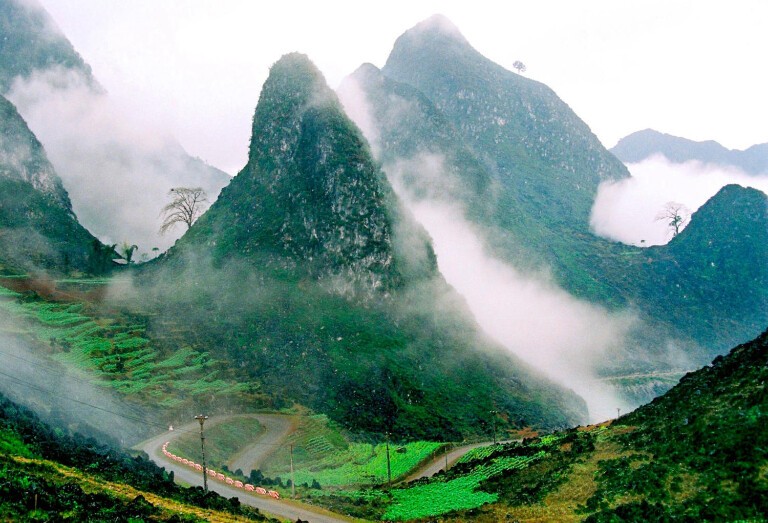 Ha Giang Buckwheat Flowers
Ha Giang Buckwheat Flowers
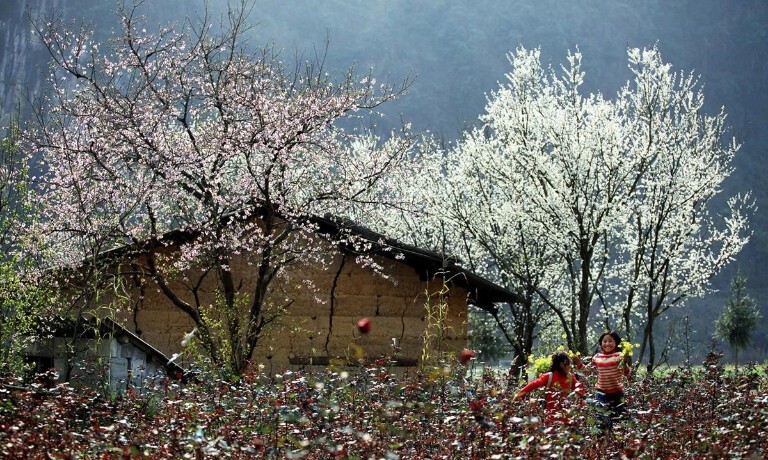 Local people hang out in the Spring
Local people hang out in the Spring
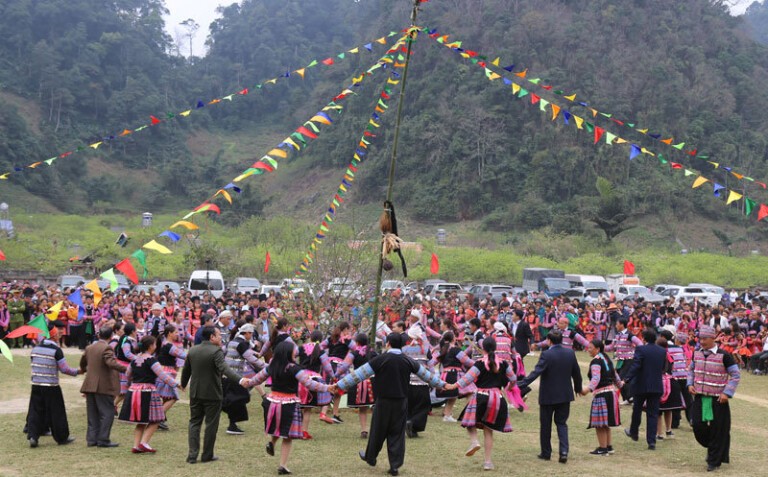 Traditional Tet festival of ethnic people in Ha Giang
Traditional Tet festival of ethnic people in Ha Giang
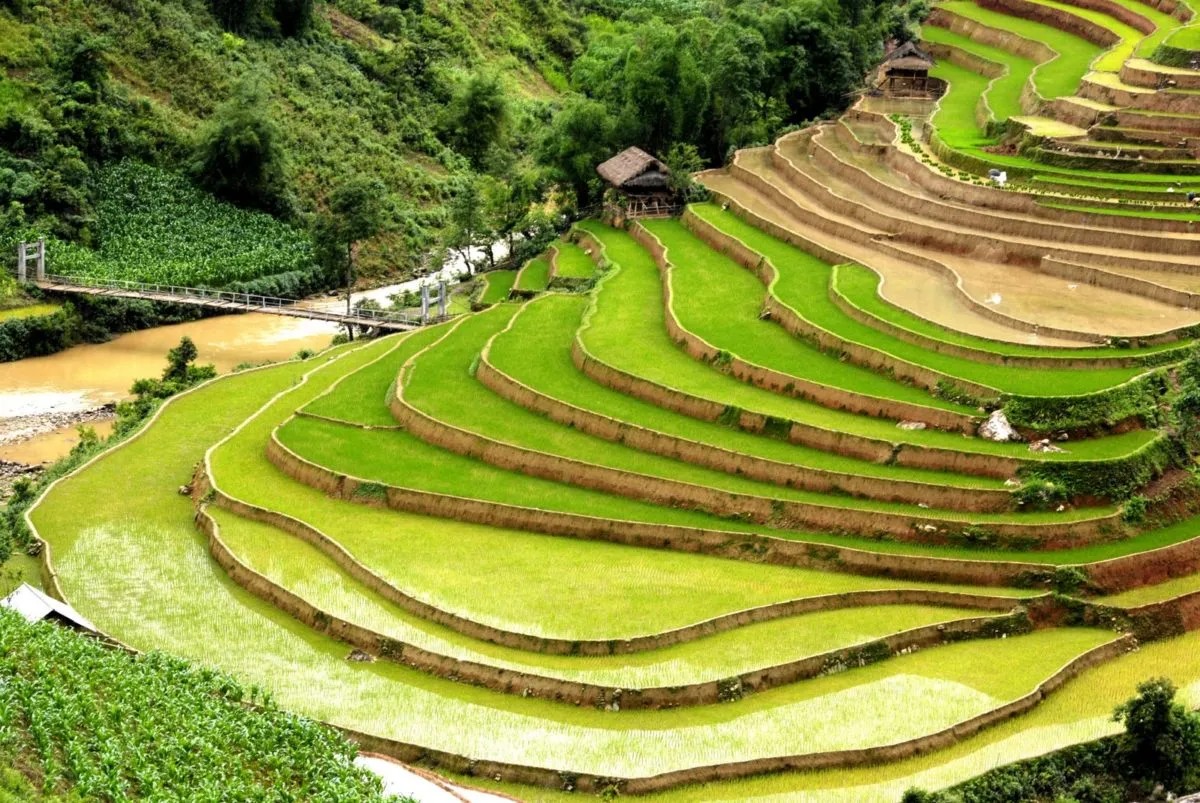 The irrigation process as water flows down the terraces to nurture the rice plants in Ha Giang
The irrigation process as water flows down the terraces to nurture the rice plants in Ha Giang
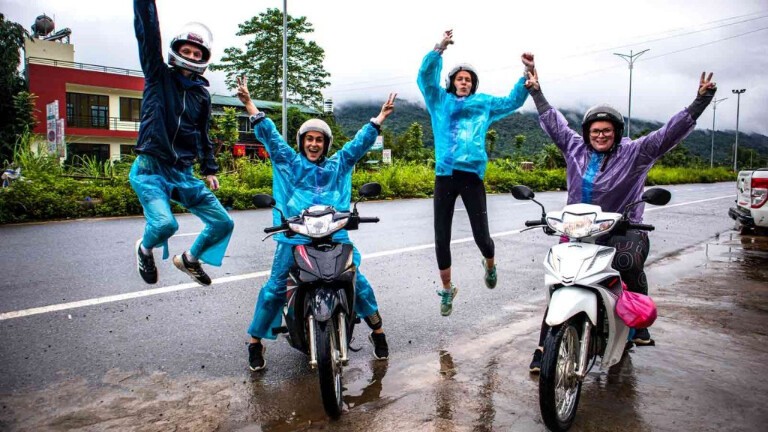 Do the Ha Giang Loop by motorcycle in August
Do the Ha Giang Loop by motorcycle in August
 A glimpse of Ha Giang during golden rice season
A glimpse of Ha Giang during golden rice season
 Ha Giang Buckwheat Flowers
Ha Giang Buckwheat Flowers
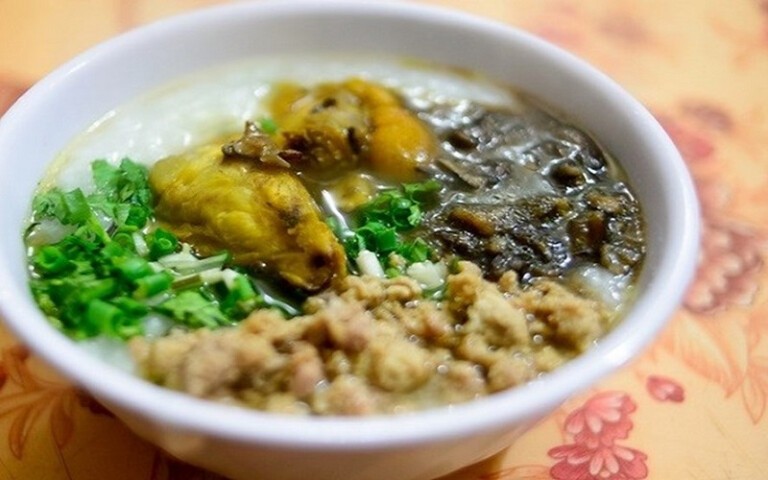 Ha Giang’s ‘poisonous’ porridge
Ha Giang’s ‘poisonous’ porridge



